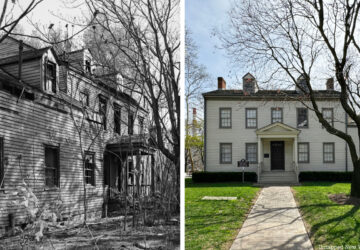8. Orange Riots of 1870 and 1871
 Photo by Amy Cools for Untapped Cities
Photo by Amy Cools for Untapped Cities
The Orange Riots were New York’s second most deadly act of civil unrest, fueled by disagreements between Irish Protestants, the namesake “Orangemen,” and Irish Catholics, as well as the NYPD and the New York State National Guard. Irish laborers made up most of the over 60 civilians killed during the riots. The First Orange Riot in 1870 occurred at a parade on July 12 during which Irish Protestants commemorated William of Orange’s victory over James II at the 1690 Battle of the Boyne. Those in the parade threw insults at Irish Catholics, and the Catholics did the same back, attacking Protestants by force. The first riot saw the deaths of eight people and continued to build anger between the two groups.
However, an Irish Protestant group called the Loyal Order of Orange demanded to march again in 1871, yet City Police Commissioner James Kelso banned the parade due to fear of impending violence. This decision sparked controversy since it seemed to give Irish Catholics a platform to continue to grow in the city, and Thomas Nast penned his famous “The American River Ganges” cartoon to protest Irish Catholic power. However, the parade proceeded with extra caution and increased police presence, yet as the Protestants walked by the Catholics, they were pelted with rocks and bricks. Without any orders, police fired into the crowd, and the parade continued to Cooper Union despite a high number of casualties. Over 150 suffered casualties, and the next day, around 20,000 people gathered to mourn the death of the 60 lost lives.





